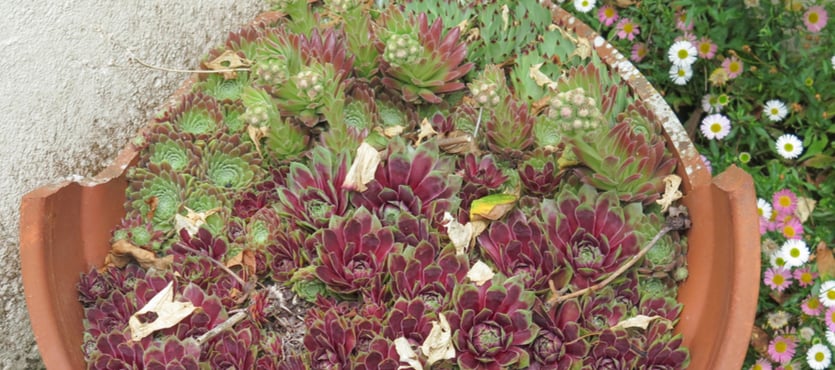Stone planters offer a unique beauty, but they also present a number of disadvantages for those who invest in them. Today, let’s explore stone planters versus resin (made from Linear Low Density Polyethylene) planters by TerraCast Products.
In terms of environmental friendliness, TerraCast Planters win hands down. Made of Linear Low Density Polyethylene (LLDPE), TerraCast Products has developed resin from up to 100 percent recycled material which can be recycled and can even contribute points to your company’s LEED credits. Stone planters, on the other hand, cannot be broken down and recycled which means when they break they end up in a landfill.
Stone is extremely heavy and dense. The density means the stone planter will not give at all if bumped but rather dent and crack. Conversely, resin planters are 90 percent less dense than stone planters, meaning they can withstand greater impacts without breaking. You already know stones are weighty, but consider the weight of an already heavy stone planter once you add soil, water, and a plant. In most cases, this means your stone planter becomes a permanent fixture, which can’t be moved without the aid of the appropriate equipment. Resin planters weigh considerably less than their stone counterparts. Consider a stone planter and a resin planter of the same size, shape, height, and appearance – the resin planter weighs in at 35 pounds while stone planter comes in at around 600 pounds. Quite a difference when you consider shipping costs, delivery costs, and the ability to move the planter once it is placed.
Stone planters placed outside in an urban environment are often stained, from weather, animal waste, and graffiti. On a stone planter, in most cases, stains cannot be removed, as the stone is porous and absorbs all that touches it. In fact, stains from the elements can damage stone planters from within, making it deteriorate more quickly. Resin planters by TerraCast are non-porous, thus stain resistant, to nearly all stains, including the paint of graffiti artists. In fact, you can easily remove stains from resin planters with a sponge and your favorite cleaner. In addition, TerraCast resin planters are also resistant to fading and damage from harsh weather which can adversely affect stone planters.
Stone planters are rigid due to the nature of the material, unable to expand or contract with changing weather conditions. Once the stone is set to form the planter, it is not made to fluctuate, though it is forced to do so as weather goes from hot to cold and back again. The elements and changing conditions will eventually cause the stone planter to crack, a result of expanding and contracting, and eventually cause the pot to break. TerraCast resin are designed with flexibility in mind, allowing them to expand and contract as the weather and season changes, meaning cracking, splitting, and breaking resin planters are never an issue.
Stone planters are also among the most costly planter options, not only due to initial expense but also due to the need to replace stained, broken, or cracked stone planters with greater frequency. Resin, on the other hand, can mimic the look of stone at a considerably more affordable price, plus resin planters by TerraCast don’t require frequent replacement.
Choose TerraCast Resin Instead
As you weigh the options – stone planters versus TerraCast resin planters – TerraCast resin is the obvious choice. Resin made from Linear Low Density Polyethylene, like those at TerraCast are the strongest with benefits that outweigh even the best stone planters on the market. Just to recap – TerraCast Planters are eco-friendly, made with recycled product and recyclable; TerraCast Planters are affordable, lightweight, durable, non-porous, and able to resist weather, stains, and other wear and tear. Choose TerraCast Products where you will find the highest quality planters as well as other property enhancing products.

